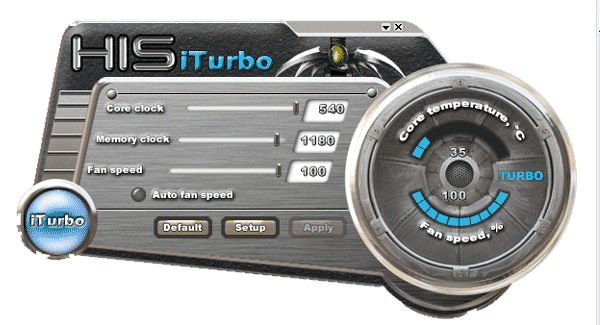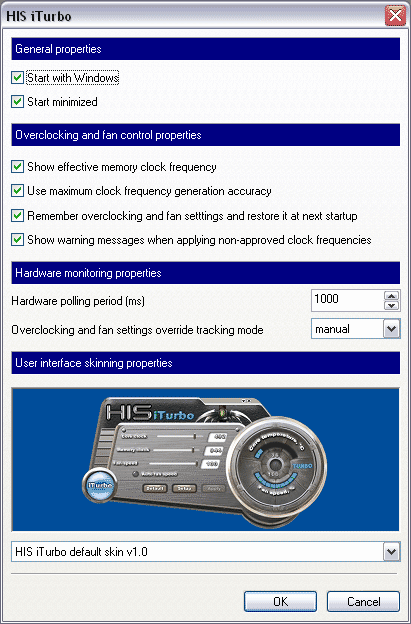 |
||
|
||
| ||
TABLE OF CONTENTSThe topic of our today's article will be the new line of ATI products, intended for the AGP segment. As you may already know, a new graphics processor R420 was announced last year in early May (that is almost a year ago), it started a whole new RADEON X800 line, which includes three motherboards: X800 PRO, X800 XT, X800 XT PE. The last two motherboards are equipped with GPUs with 16 pixel pipelines, while the first one has 12. We have already written much about this series, there is nothing new, you can read about everything in our articles. But when Intel announced the new technology, which implied upgrading the system interface to PCI-Express, and started to promote it, Canadian ATI switched completely to manufacturing chips for video cards with the new interface. It did so with such ardour that it forgot a lot of products with the AGP interface. As is well known, the expansion of the PCI-E segment was very slow at first. It was so despondent that this sector failed to go above 10% by the end of 2004 (ATI had been expecting 40-50% according to the summer forecasts). Marketing plans from Toronto were obviously wrong. In order to somehow remedy the situation, it was decided to continue the production of RADEON 9800 PRO as well as to accelerate the PCI-E-to-AGP project to shorten the time for the bridge launch, known as RIALTO. In the long run they got it right, we have already reviewed such cards based on RADEON X800 XL with this bridge (there have been recently two articles on this topic). It should be noted that the competing NVIDIA was more far-seeing and released the HSI bridge even before the announcement of PCI-E technologies. That's why the americans had no troubles to release video cards on the new promising chips with two interfaces: PCI-E and AGP. Thus, GeForce 6600/6600GT won great popularity in middle-end, offering the best price/performance ratio. Let's return to ATI. With the release of new AGP solutions with the RIALTO bridge that should fill the gap in the $250-$350 price range, there have been also launched X850 cards based on GPU R481, that is RADEON X850 (PRO/XT). It's essentially the same R420, but the improved manufacturing technology allows increased CPU clocks without a negative effect on the yield of effective dies. Let's have a closer look: when the R420 was out, the first cards to crowd the shelves were RADEON X800 PRO, that is 12-pipeline cards (let's speak of pipelines as applied to video cards instead of GPU for the sake of simplicity). But 16-pipeline X800XT/PE cards were nowhere to be seen. The Canadian company obviously had great problems with the low yield of effective dies, capable of activating all 16 pipelines and operating at 520 MHz. That's why the X800XT was launched, which used chips with all 16 effective pipelines that failed 520 MHz tests. But even that didn't help to avoid the huge deficit of the X800 XT. The situation started to get better only by the end of 2004, when the process technology was optimized (the R420 is manufactured by the 0.13 micron low-k process technology). That's the reason of a seemingly strange decision to equip cheaper video cards with the RIALTO bridge and to equip more expensive cards with the chip natively supporting the AGP interface. I repeat that an entire group of accelerators has entered the AGP video cards market now:
We can see that only the first two products are equipped with the bridge, the other three have the native AGP interface. Besides, the first two chips are manufactured by the 0.11 micron process technology. Conclusion: in order not to design a new 0.11-micron chip with the AGP interface (it's very expensive!), it's cheaper to release a card with the RIALTO bridge, so that the $250-$350 price segment is covered. And the 0.13 micron low-k process technology had been already used in the R420, which had the same AGP interface. That's why the process technology was improved and optimized to easily produce 540Mhz and 520MHz chips. That is R481 is R420 with increased clocks. Considering these clocks, RADEON X850 XT is obviously almost on a par with RADEON X800 XT PE. So, the old cards based on the R420, which was very expensive due to the low yield of effective dies, are leaving the market, because they cannot be any cheaper and the manufacturing of these chips is nearly discontinued. They will be replaced with almost the same video cards based on the R481, but at lower costs, so the price may be changing significantly even now (we can already see X850 XT AGP at $490-540 offered by various retailers). That's why there is no need in describing the technical innovations of the X850: the predecessors of these cards offered the same features. I guess, the exterior of the X850 XT cards will not differ from the previous X800 XT. Now what concerns the video cards from HIS under review. As you know, ATI manufactures all High-End cards of the latest generation on its own (it orders them on the selected plants), its partners buy entirely ready video cards instead of chips. That's why they are all the same! They differ only in some components, cooling systems in particular. HIS traditionally manufactures two card types: an entirely reference card, bought from ATI, and the product with a proprietary cooling system from Arctic Cooling, which is certainly of a special interest. But even that's not the most important thing! What's the most important is that the IceQ II Turbo series guarantees raised frequencies via a proprietary utility! Remember Gainward and its Golden Sample series. In fact HIS offers a similar functionality in video cards based on ATI chips.
Video Cards
I think I shouldn't even draw your attention that the product from HIS is the same reference card (even the P/N from ATI is almost the same). But there are some PCB layout differences from the previous X800 XT cards. Engineers reworked the PCB before they launched the X850XT. There are no fundamental differences, they just changed the power supply units, the layout of output circuits, etc. Both cards have VIVO, where VideoIn is based on RAGE Theater. Besides, all the X850 products usually have two DVI jacks, regular monitors with d-Sub can be connected via the corresponding adapters that come shipped with the bundle. But in this case the cards are equipped with a couple of jacks: d-Sub + DVI.
Let's review the cooling systems.
Bundle
Packages.
Installation and DriversTestbed configurations:
VSync is disabled. One of the most important features of the Turbo series is a bundled proprietary utility iTurbo (by the way, its author is well known in the 3D-graphics community :). Like ExperTool from Gainward, this program (see the first screenshot) allows to raise operating frequencies of the card at one button press (see the second screenshot). Thus, the manufacturer guarantees operation of the above mentioned cards within the frequency range specified on the box stickers (see above). That is when you buy HIS RADEON X850 XT AGP IceQ II Turbo 256MB, you actually get a Platinum version :).

  That's why remember to install iTurbo, if you buy one of such cards. In this case your video card will work a tad faster :). Test results: performance comparisonWe used the following test applications:
Game tests that heavily load pixel shaders 2.0.TR:AoD, Paris5_4 DEMO
This test loads shader units. Chips that can calculate more efficiently are victorious here. That's obviously a hobby-horse of ATI. Besides, GPU operating frequencies play a just as important role here. That's why the X850XT victory (both cards) is quite expectable.
Game tests that heavily load vertex shaders, mixed pixel shaders 1.1 and 2.0, active multitexturing.FarCry, Research FarCry, Regulator
 FarCry, Pier
This test is like a salad of technologies: heavily loaded shaders (many of them are Version 1.1), an immensely loaded vertex unit (sometimes scenes may contain up to 200000 polygons), and various texturing operations (they require an optimal pipeline with texture caches). That's why it's impossible to predict a victory of this or that manufacturer: it all depends on multiple factors. We can see that all the three tests (in totally different scenes) brought forward the products from HIS (ATI). What's played the major role in this victory? In my opinion, the main contribution was made by fine-tuned and optimized drivers, especially for Version 1.3, which actively uses long shaders (2.0b), and a larger calculating capacity of vertex and pixel shaders due to higher clocks. Game tests that heavily load both vertex shaders and pixel shaders 2.0Half-Life2: ixbt01 demo
 Half-Life2: ixbt02 demo
 Half-Life2: ixbt03 demo
 This game has been the hobby-horse of the Canadian company from the very beginning, because the developer had tightly cooperated with ATI long before the game was released. That's why you needn't be a genius to guess that ATI video cards will outperform their competitors. But it should be noted that NVIDIA's programmers were very productive and the performance difference has dropped manifold recently (though ATI's products are still in the lead). Of course, these optimizations were not the only source of victory, some contribution was made by more powerful shader units in the X850 series cards.
Game tests that heavily load pixel pipelines with texturing, active operations of the stencil buffer and shader unitsDOOM III Chronicles of Riddick, demo 44
 Chronicles of Riddick, demo ducche
 These tests are grouped together both due to the same API - OpenGL and to their high demands to an accelerator: complex multitexturing. DOOM III is critical to the stencil buffer performance. That's all fine-tuned in NVIDIA. The hobby-horse of its products is a long and well thought-out pipeline, offering much more efficient texturing than ATI's products due to good caching. That's why we can see a partial defeat of the X850 series in CR and a traditional fiasco in DOOM III (to do justice to these cards, DOOM III for NVIDIA is like HL2 for ATI in terms of tight cooperation with developers). But we can see that the X850XT fairs rather well against the 6800GT (I mean DOOM III).
Synthetic tests that heavily load shader units3DMark05: MARKS If this test loads shader units, the result is obvious (I have already mentioned above, that in this case the X850 series occupies better positions to be victorious). But we should take into account again that many groups of programmers are busy with fine-tuning drivers for this test, so the alignment of forces may change with the new driver versions as well as with the new test version.
Conclusions
In conclusion I want to publish a video clip (2.6MB, AVI DivX 5.1), where one of the reviewed video cards is installed into a modded computer.
You can find more detailed comparisons of various video cards in our 3Digest.
According to the results of this review, HIS RADEON X850 XT AGP IceQ II Turbo 256MB and 
Theoretical materials and reviews of video cards, which concern functional properties of the GPU ATI RADEON X800 (R420)/X850 (R480)/X700 (RV410) and NVIDIA GeForce 6800 (NV40/45)/6600 (NV43)
28.04.2005
Write a comment below. No registration needed!
|
Platform · Video · Multimedia · Mobile · Other || About us & Privacy policy · Twitter · Facebook Copyright © Byrds Research & Publishing, Ltd., 1997–2011. All rights reserved. | ||||||||||||||||||||||||||||||||||||||||||||||